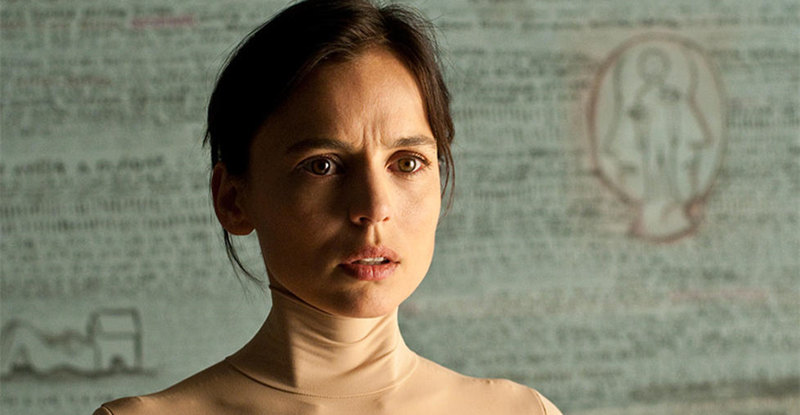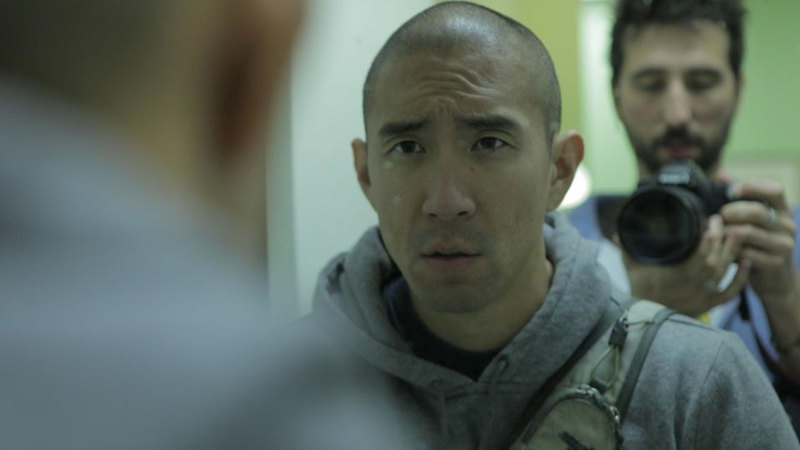“Frankenstein: The Real Story” is really a compilation of three programs that aired separately on the History Channel and A&E: “It’s Alive! The True Story of Frankenstein” (A&E, 1995), “Frankenstein” (History, 1997), and “In Search of the Real Frankenstein” (History, 2008).
There’s some overlapping, especially with the two History Channel productions, but collectively they do a pretty good job of covering all aspects of Mary Shelley’s 1918 novel, Frankenstein: or, The Modern Prometheus. We get biographic and compositional details, possible influences and historical models, theatrical productions, film adaptations, TV shows, and product tie-ins—all of which illustrate a continuing fascination with Frankenstein’s monster and the whole idea of a scientist’s creation coming back to haunt him.
The best of the three is the first one, a 100-minute TV documentary narrated by Roger Moore, who does his best Alistair Cooke impersonation and adds that touch of seriousness to the proceedings that you’d expect from a shaken-not-stirred martini guy. While the other two documentaries focus more on possible historical models and philosophical/scientific movements, told against a backdrop of Mary Shelley’s own interesting life, “It’s Alive: The True Story of Frankenstein” gets a little into that background but delves even more deeply into the whole Frankenstein phenomenon from a pop-culture standpoint.
In this excellent feature, there’s plenty of interesting vintage footage from both theatrical productions that Shelley’s novel inspired and also the numerous films. We get all sorts of behind-the-scenes facts and anecdotes about all of the movies, with, of course, a larger emphasis placed on the 1931 classic “Frankenstein,” featuring Boris Karloff as the monster. But since Mel Brooks appears on camera, as does Kenneth Branagh, “Young Frankenstein” and the 1994 “Frankenstein” starring Robert De Niro as the monster are also satisfyingly covered. And all things Frankenstein get at least some mention—including the popular TV series “The Munsters,” Abbott and Costello’s run-in, and the classic monster models that kids from the ‘50s and early ‘60s were assembling with model airplane glue before the sniffers ruined it for everyone.
What’s more, the talking heads are so passionate about the subject that they’re also unguarded and candid in their responses. With Mel Brooks, for example, we get the confession that when he was a child growing up in Brooklyn as little Melvin Kaminsky, he had recurring nightmares that Frankenstein was climbing up his fire escape to get him. He got his revenge by making fun of the monster in “Young Frankenstein.”
But the other two programs suffer from a slight case of History Channelitis. Fans will recognize the symptoms: repetition and the reuse of re-enactment footage, and a sense that the show is padded and could have delivered the information more efficiently and had time left to explore other areas.
Still, the story of how a teenaged Mary Shelley came to write the most enduring Gothic horror story ever invented is fascinating enough that it’s pretty easy to just stay strapped to your gurney and roll with the narrative, however long or however repetitive it may seem. This was a woman whose mother, a famed philosopher and feminist, died giving birth to her, and whose father was a famous political philosopher. Shelley would go on to marry the Romantic poet Percy Bysshe Shelley, and her novel—written two years after their marriage—would come alive with all of the ideas that were swirling around among the day’s scientists and philosophers. And how outrageous is it that Shelley came up with the idea for her book at the prodding of Lord Byron, who proposed that he, his fellow poet, and Mary Shelley each write a ghost story? From this grew what Mary thought would become a short story—expanded at her husband’s urging into the full-blown novel that created a new myth for mankind.
Fans of “Frankenstein” will want to get this because there’s so much here about so many aspects of the myth that there literally is something for everyone. Runtime for the three programs is 178 minutes.
Video:
All three programs are letterboxed and presented in 1.33:1 aspect ratio, and as you’d expect the older shows don’t have the same quality as the most recent rehash. But aside from a little graininess and some ill-defined edges, the video quality is overall very good—something you notice more in the talking heads segments than in the vintage clips, which vary somewhat in quality.
Audio:
The audio is a simple Dolby Digital 2.0 that’s sufficient, since the three programs are all dialogue-driven. Subtitles are in English SDH.
Extras:
There are no bonus features. Really, these three programs ARE bonus features that feel like companions to the 1931 “Frankenstein,” Brooks’ “Young Frankenstein,” and Branagh’s 1994 revisionist version.
Bottom line:
If you’re a Frankenstein fan, there’s a lot of information and some great footage that will enhance your appreciation of the Mary Shelley myth of “The Modern Prometheus” and all its offspring.


